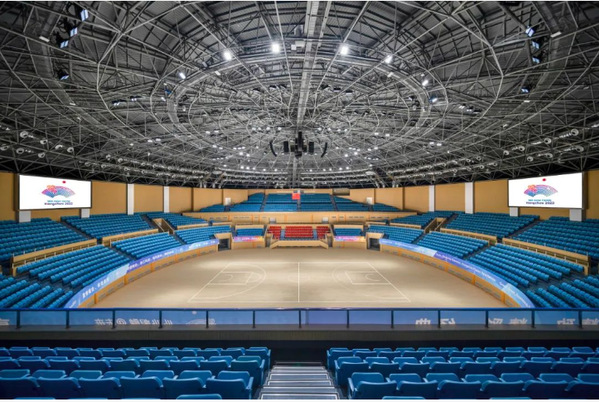Zhejiang University’s Architectural Expertise Illuminates Asian Games Venue Design
The Architectural Design & Research Institute of Zhejiang University (UAD), has been instrumental in shaping the landscape of the 19th edition of the Asian Games in Hangzhou, guided by the core concept of hosting a “green, intelligent, economical and civilized” event. Their pivotal role extends to the construction, renovation, and design of venues, including two noteworthy Asian Paralympic projects. Let’s explore some of these remarkable venues that epitomize the prowess of Zhejiang University.
Shaoxing Baseball & Softball Sports Center
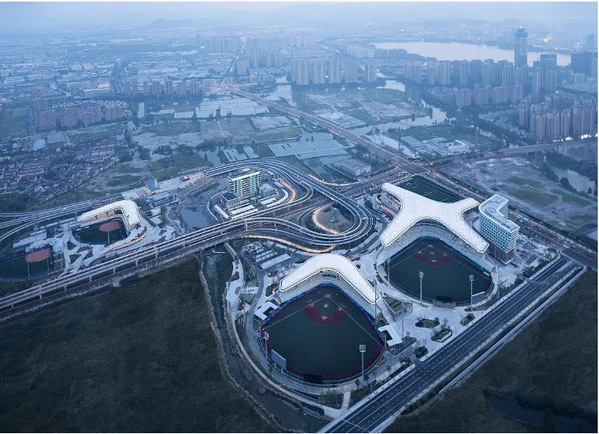
It serves as the competition venue for baseball and softball. Inspired by the textile culture, it seamlessly integrates a sports and cultural complex with a bustling commercial street, embodying the spirit of Shaoxing’s water town.
Fuyang Yinhu Sports Center
It serves as the competition venue for shooting, archery and modern pentathlon. It draws inspiration from the renowned painting “Dwelling in the Fuchun Mountains”, aiming to convey the cultural charm of Hangzhou and the distinctive landscape of Fuyang via architectural forms. It recaptures the essence of “Dwelling in the Fuchun Mountains” with play of light and shadow, allowing spectators to experience the allure of Chinese traditional culture while watching games.
Zhejiang Normal University (Xiaoshan Campus) Gymnasium
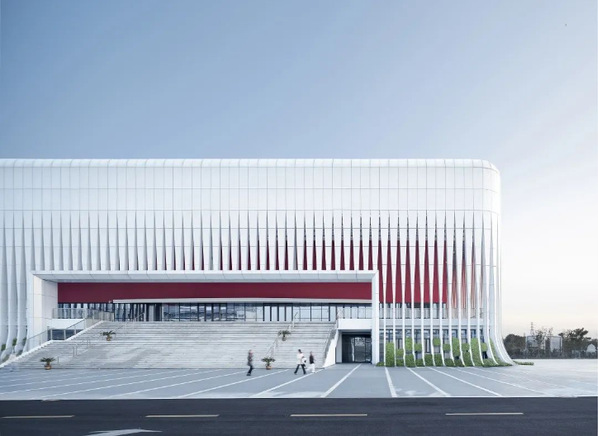
It serves as the competition venue for handball. Inspired by the Qiantang River tide and Jiangnan silk, it seamlessly merges a gentle “water curtain” aesthetic with the surroundings. The 308 “water curtains”, as smooth as Jiangnan silk and as majestic as the Qiantang River tide, descend gracefully from the sky, symbolizing the vitality of the campus. The corners of the venue and the square are connected with soft curves, blending the two into one, allowing the “water curtains” to stretch into the distance.
Deqing Geographic Information Park Basketball Court

It serves as the competition venue for 3×3 basketball. It focuses on returning the lake to the public and integrating it into daily life. By lowering the height to reduce its volume, adding greenery to the roof to create a three-dimensional park, and positioning the most essential competition area at the center of the roof, it creates a natural ecological backdrop along the lake, characterized by a light and free image. The venue is well-integrated with the urban space by means of space sharing and interface interaction. It aims to become an Asian Games legacy, thereby turning into a permanent landmark embodying the spirit of sports.
Lin’an Sports and Culture Center
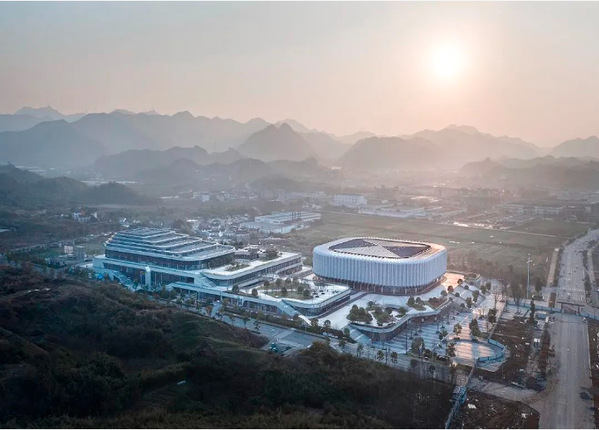
It serves as the competition venue for taekwondo and wrestling. It harmonizes with the surrounding natural landscape, and leverages gentle hills to create an “urban beacon” with controlled visibility. Guided by the “balanced architecture” theoretical framework, this sporting arena ingeniously harmonizes the natural landscape with the artificial environment, making it a one-of-a-kind, innovative sports complex in China.
Zhejiang University (Zijingang Campus) Gymnasium

It serves as one of the competition venues for basketball. The renovation work minimizes alterations to the existing layout, maximizes space utilization, and emphasizes cost-effective transformations. Additionally, consideration has been given to post-event operational convenience and sustainability. Through this renovation, various hardware and software facilities of the gymnasium have been upgraded to different extents, effectively enhancing the campus environment. Furthermore, it will fulfill the requirements for on-campus fitness and various cultural activities after the games.
Jinhua Sports Center Gymnasium
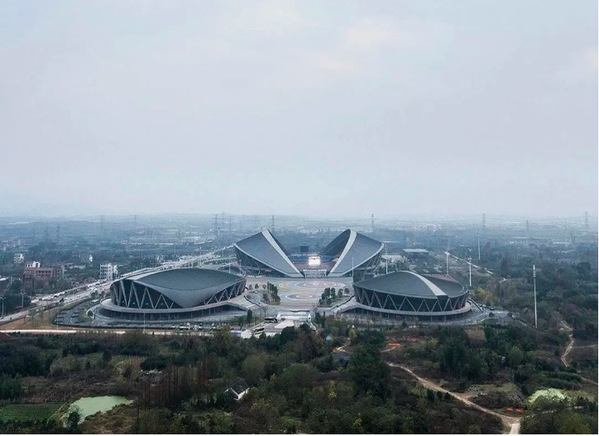
It serves as the competition venue for sepaktakraw. The design incorporates elements similar to a sports stadium, creating a strong visual contrast and impact through large concrete components and delicate glass cladding. A linear skylight that runs through the competition arena and practice arena brings soft natural light into the building. The venue is divided into the competition arena and practice arena, with a functional layout that not only meets the requirements for competition but also ensures post-event economic feasibility and convenience.
Jinhua Sports Center Stadium

It serves as the competition venue for football. Inspired by the Chinese idiom “燕跃鹄踊 (literally, swallows flying high and geese dancing),” it embodies dynamism and athleticism with graceful yet robust arcs.
Hangzhou Dianzi University Gymnasium
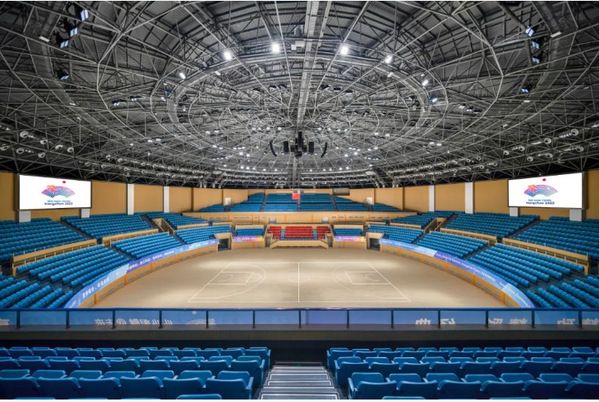
It serves as the competition venue for fencing. This venue follows the principle of minimal architectural layout changes, high utilization of the building space, and low-cost renovation. Additionally, it takes into full consideration the convenience and sustainability of the venue after the Asian Games. With limited cost input, this iconic arena at Hangzhou Dianzi University is brought back to life.
Home of Zhejiang Disabled People

This renovation project, centered around the ‘home’ culture, revitalizes an old building with a focus on exhibitions, high-tech assistive devices, and employment guidance. It aims to create a demonstration window during the Asian Para Games, showcasing Zhejiang Province’s dedication to rehabilitation services, smart assistance, and accessible environmental construction, as well as China’s efforts in caring for the disabled.
Shangsheng District Social Integration and Sharing Community for the Disabled
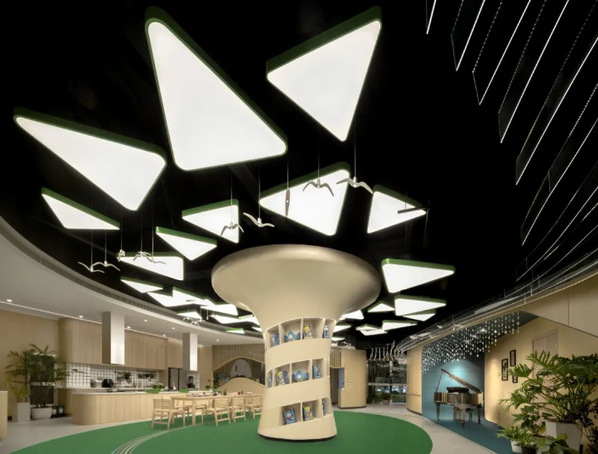
This project aims to create an accessible living environment for people with disabilities, fostering social integration and cultural activities, thus enabling them to gain equal access to social resources, integrate into urban life, and reap rich dividends for urban development. During the Asian Para Games, rehabilitation services and smart assistance for people with disabilities will also be showcased to visitors from various countries, highlighting China’s great achievements in cultural-ethical standards and social development.
In addition, UAD has conducted accessibility reviews and provided guidance for all the 19 venues of the Asian Para Games, as well as the venues the opening and closing ceremonies and the Asian Para Games Village.
Amid the stadiums oozing with elegance and beauty, the rich tapestry of traditional Chinese culture thrives, and the relentless spirit of seeking truth and pursuing innovation flourishes. Guided by the inspiring theme of “Heart to Heart, @Future”, we shall embark on our journey towards the Asian Games. In the days to come, more ZJUers will chase their dreams and sprint towards the future!

